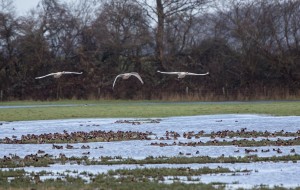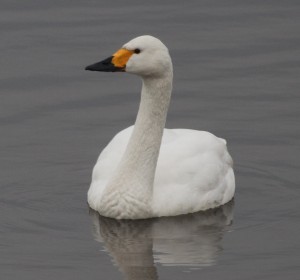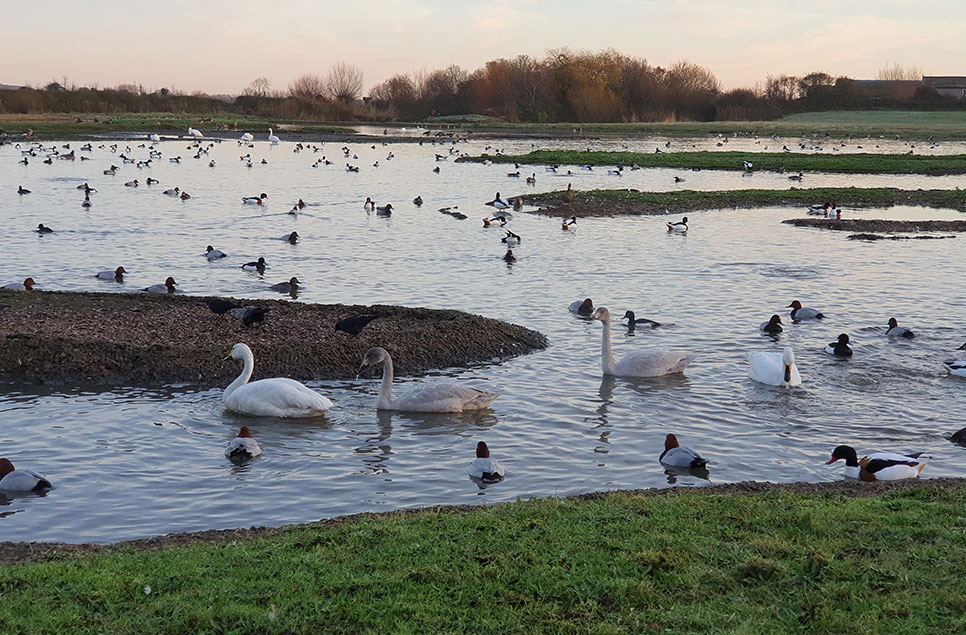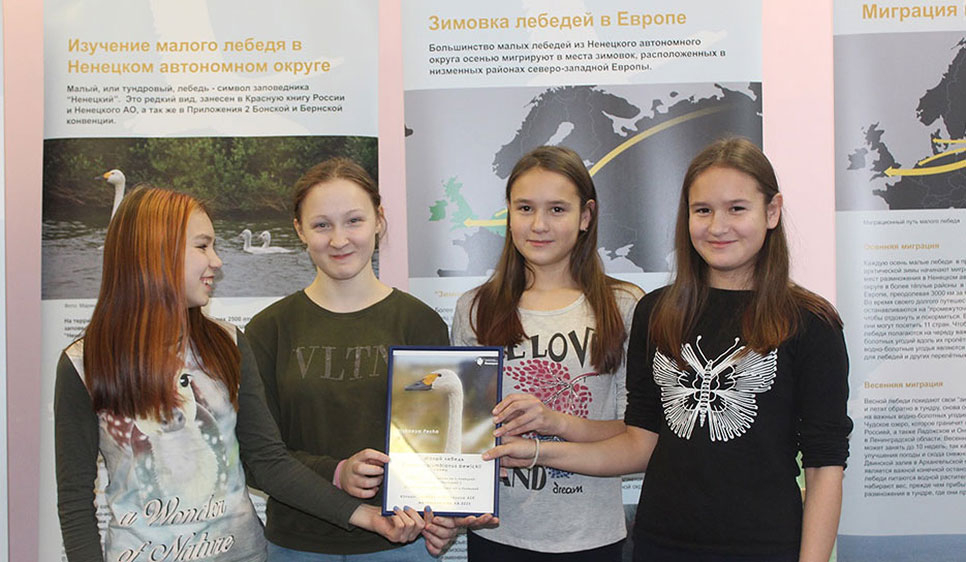Floods, floods, floods!
Over the weekend, the River Severn, which lies adjacent to Slimbridge, rose to the highest level we can remember since 1982. This unusual tidal surge transformed many areas of low lying salt marsh into large lakes as the water stretched a further half mile inland, only stopped by the sea wall flood defence. So while preparations were being made along the Severn floodplain to protect property and infrastructure should the river banks have burst, what were the swans doing?
 Swans using the Tack Piece (G. Hann)
Swans using the Tack Piece (G. Hann)
They were making the most of it! The salt marsh on the shores of the river flood regularly and it’s this regime and the deposition of sediments that make it such a rich habitat providing excellent grazing for the swans, geese and other waterbirds when the water recedes. The Tack Piece remains a popular day time feeding spot but some birds are now also exploring other areas of salt grass such as the Goose House Ground. A quick check of the Severn valley from the observation tower with its far-reaching views is handy for spotting where the swans are.
Despite some unfavourable conditions for migration, a handful of individuals have pressed on to Slimbridge. Sadly, some have returned without their long-term partners. Geena flew in without partner of ten years Hugo, while Vanessa has arrived without Vance who she has been with since 2004. Given that Bewick’s often mate for life, arriving without a long-term mate is often a bad sign. There are of course exceptions to every rule and it is possible that these birds became temporarily separated from their partners during migration. A swan named Caper, being one of our oldest Bewick’s swans, had several partners over his lifetime, one of which was a swan named Gambol. They had been together for just one year before Caper returned to Slimbridge without Gambol. Caper remained single for the following two years as he continued to visit the reserve (if a mate is lost, it takes on average 2.6 years to re-pair) but Gambol was not seen. We were therefore very surprised to see Gambol with Caper fly in together after two years of separation!
So we will be keeping a look out for both Hugo and Vance in the coming weeks....




